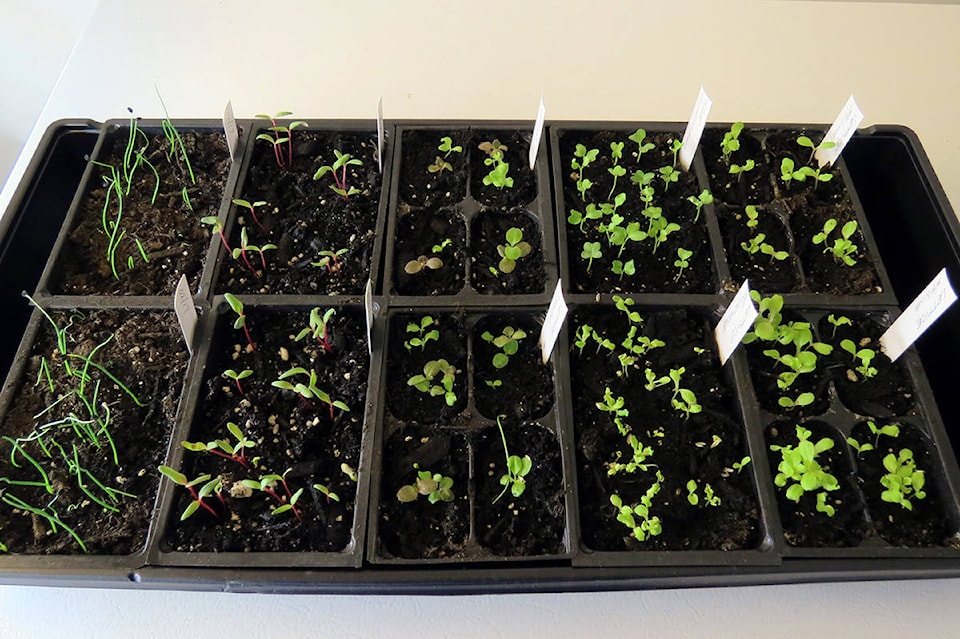Leslie Cox
Special to The Record
I am always in a quandary at this time of year. When can I start sowing seeds in the vegetable garden?
According to the chart in the West Coast Seeds catalogue, I should have seeded arugula, broad beans, corn salad, cress, mustard, peas, radish, and spinach by now. But I haven’t. With overnight lows still ranging between -1 and -5C over the last week, I think it is too cold for seed germination.
Mind you, daytime highs are climbing towards high single digit range; a good sign since arugula, corn salad, lettuce, and mustard all want air temperatures around 5C.
But here’s the rub. While ambient temperature is a valuable knowledge variable, soil temperature is really the key detail. Arugula, corn salad, lettuce, and mustard need a minimum soil temperature of 4.5C. So even though the air temperature range is good for sowing these seed varieties, my soil temperatures are only reaching 1-2 degrees.
And so I wait. Impatiently, I might add. Thank goodness John built me a set of light shelves which allow me to grow a few varieties for transplanting out, whenever the weather begins to co-operate.
Honestly, the weather! Who can predict? It is a roll of the dice to pinpoint the last frost date and so be safe to transplant tomatoes, cucumbers, melons, and peppers outdoors.
Even keeping annual weather records is not a whole lot of help. From 2011 through 2014, we could reliably count our last frost date falling at the end of April or very early May. Tomatoes, cucumbers, and peppers destined to be grown in the garden would be transplanted out the second or third week of May.
(We always grow these three types in the greenhouse too, hedging our bets against getting hit with a later-than-normal frost).
But in 2015, our last frost was recorded on April 14. That year, we waited out the rest of April, expecting more frosty mornings which did not happen. Oh well, missed that two week jump start on the planting season. No big deal. As always, come the real heat of summer, the late plantings soon catch themselves up.
In 2016, the last frost fell on March 18 – a whole month earlier! What gives? No way were we going to transplant tender annuals into the garden at the end of March. Too risky. But with fingers crossed, I was transplanting some varieties outside by the second week of April.
In 2017, the last frost was on April 3. A little more respectable — and believable. Again, I took a deep breath and transplanted things out early.
Given the data from these last three years, climate change appears to be happening in our garden. I would prefer a few more years of data collection before confidently moving the start of our growing season ahead but the warming trend is promising thus far.
As for direct sowing my early seed varieties in the garden, I am not going to roll the dice. Instead, I will plant according to when my soil thermometer tells me the time is right.
And so I wait. The soil must warm up to 4.5C before I can sow any lettuces, radishes, spinach, kale, and mustard outdoors.
Like I mentioned earlier, thank goodness for a handyman husband and a large light shelf unit! I am sure John built it just to keep me out of his hair in February and March.
For more seed sowing information, here is the link to the air and soil temperature chart on my website: bit.ly/2I1Xep7
Leslie Cox co-owns Growing Concern Cottage Garden in Black Creek. Her website is at www.duchessofdirt.ca and her column appears every second Thursday in the Record.
